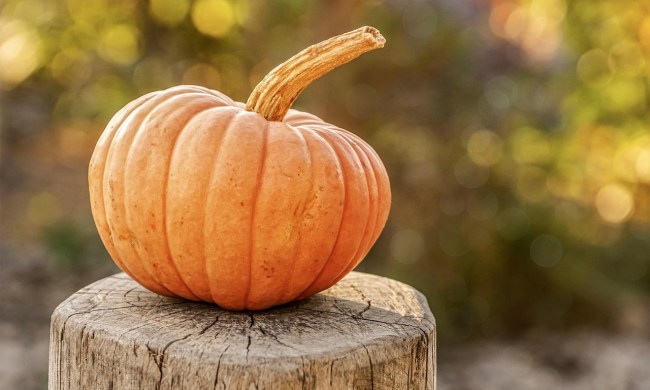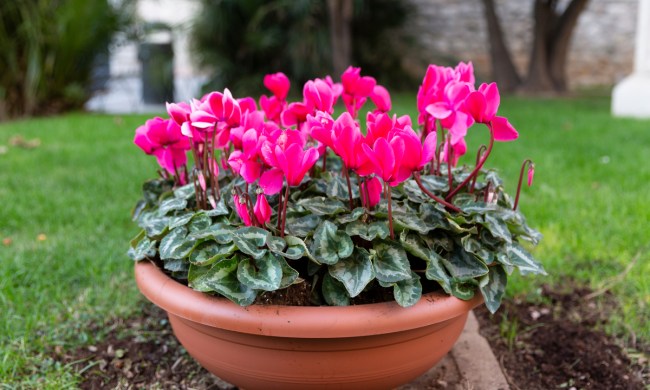Part of gardening is defending your plants from all the pesky pests that want to snack on them. The insects are just trying to survive, but this time they’ve picked the wrong plants to plunder! If you’ve got some thrips in your garden, or you think you might, here is everything you need to know to keep your garden safe.
What are thrips?
Thrips are little insects that frequent gardens. There are many different types of thrips, so an exact description isn’t possible, but there are a few key characteristics to watch out for. Thrips are very small, less than half an inch, and are brown, black, or yellow. They have wings, although they can be hard to see, as they are very small and fast.
An easier way to identify thrips is by the damage they cause. Thrips suck nutrients from plants, leaving small silvery marks. These marks can be stripes, spots, splotches, or streaks. They’re distinct from many other pests in this way since they don’t bore holes into stems or eat entire leaves.
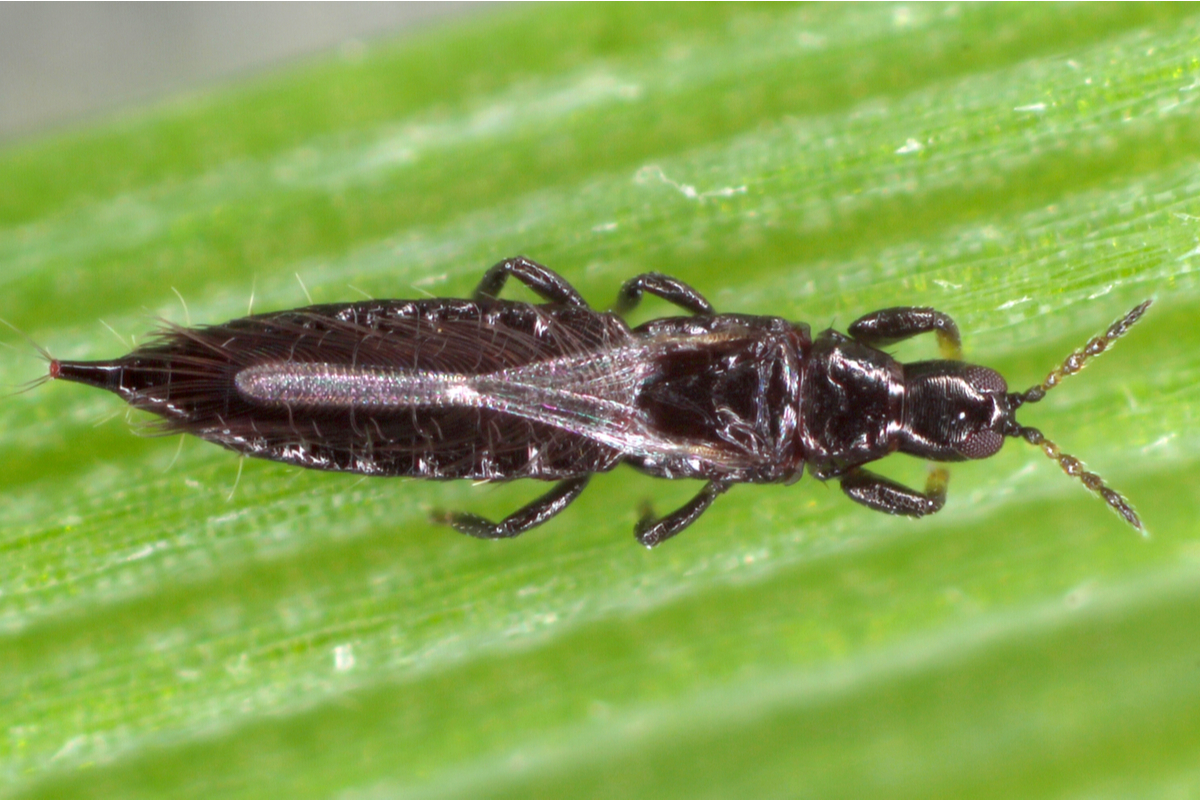
However, this doesn’t mean they aren’t just as dangerous as other pests. In some ways, they are more dangerous. While the sucking of nutrients may not cause too many problems on its own, except in young plants or plants already under stress or in extreme infestations, thrips also carry some truly terrible plant diseases.
What plants do they normally eat?
Unfortunately, thrips will eat almost anything. Most garden vegetables are at risk, as well as trees. In addition to that, they can target your plants in almost any location. Regular outdoor gardens are a target, but thrips are small enough that they can get into greenhouses and can even get to indoor plants on occasion.
They are especially damaging for fruiting plants. In severe cases, thrips can drain enough energy from fruiting plants that the fruits produced can be malformed or smaller than normal.
How do you get rid of thrips?
There are a few common methods to get rid of thrips. You can get thrip traps, which are almost like fly paper. They’re sticky sheets of blue and yellow paper that will keep thrips from flying away if they land on it. You can wait for thrips to land or deliberately shake them off the plant and onto the trap.
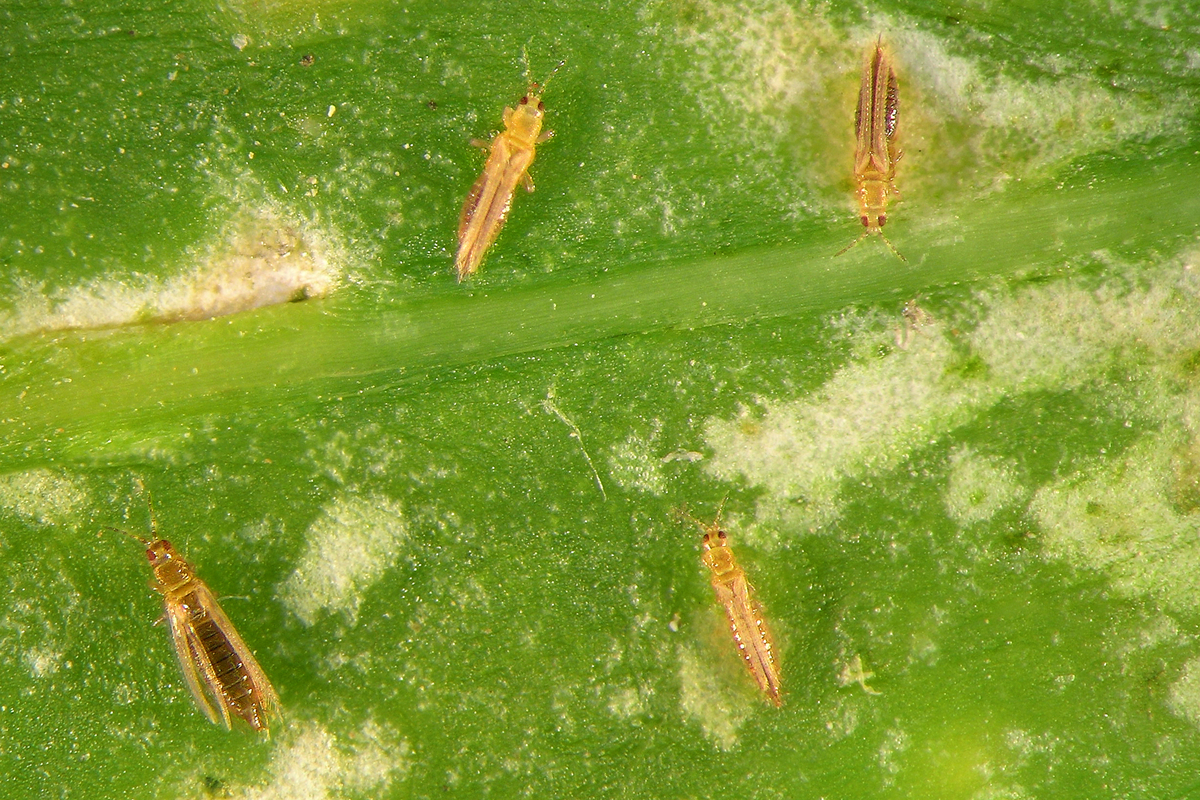
There are also various insecticidal sprays, soaps, and treatments available. There are artificial chemical sprays but also organic pest control methods you can use. Whichever you choose, make sure to read all the instructions and follow them carefully to avoid hurting your plants or yourself. If you’re looking for a great organic treatment, look for neem oil.
Diatomaceous earth is another option, although it isn’t quite as effective as neem oil. Gently spread it on the underside of leaves where thrips like to hide. The abrasive surface scratches insects, dehydrating pests with exoskeletons.
How do you keep them from coming back
Some insecticides offer some limited preventative protection, but there are other methods that offer more in the way of keeping thrips away from your garden in the first place.
The best way to keep thrips from making your garden their feeding ground is to attract some of their natural predators. Ladybugs, pirate bugs, and lacewings are very helpful for keeping thrips at bay. Garden diversity is key for this but especially plants that have blooms comprised of multiple smaller flowers — Queen Anne’s Lace and goldenrod, and flowering herbs.
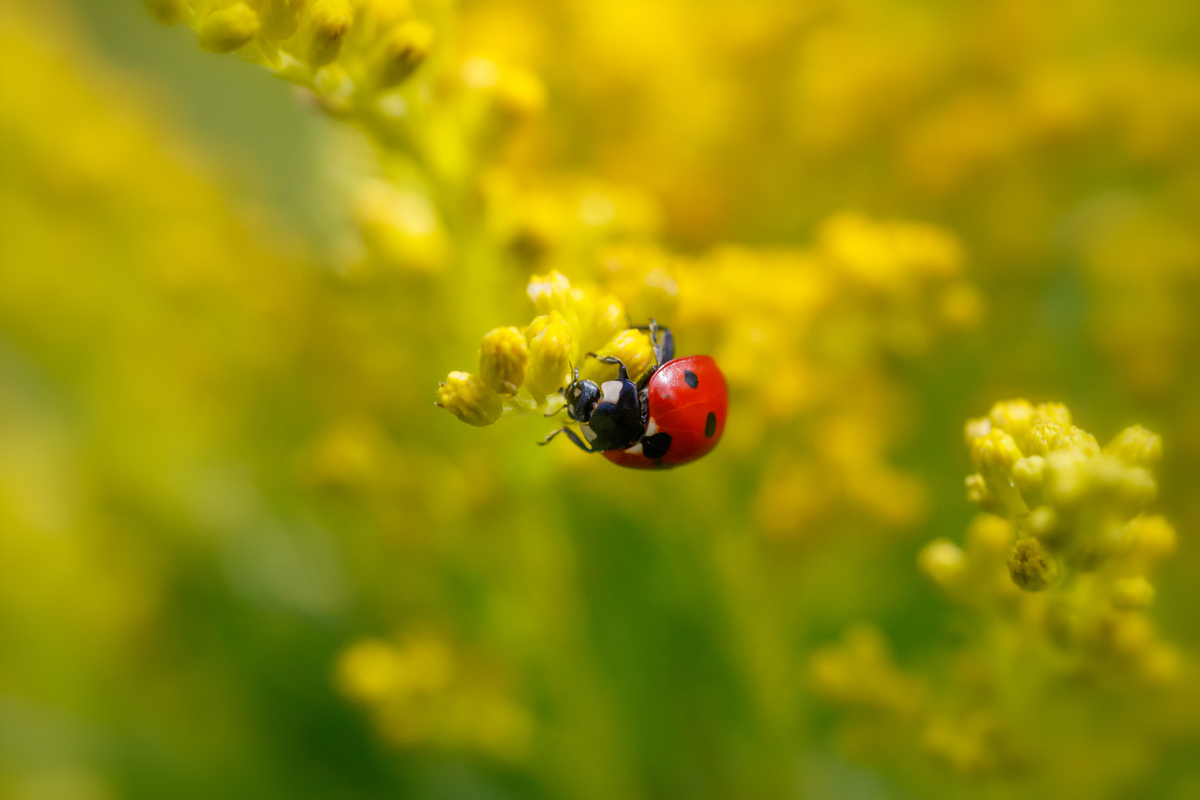
You can also alter the soil to make it less hospitable for thrips. Using reflective mulch can help keep thrips from finding your plants in the first place, as the reflective property interferes with their ability to see the plants.
Cutting back on fertilizer is also helpful. This may seem counterintuitive, since well-nourished plants are normally better at fending off pests and diseases. However, lots of fertilizer actually makes your plants more likely to be targeted by thrips.
Now you know what thrips are and how to defend your garden against them. Whether you’re looking for preventative measures or to get rid of an existing infestation, you’re ready to take action! Once you’ve dealt with the thrips, you can finally get back to focusing on the fun parts of gardening.


